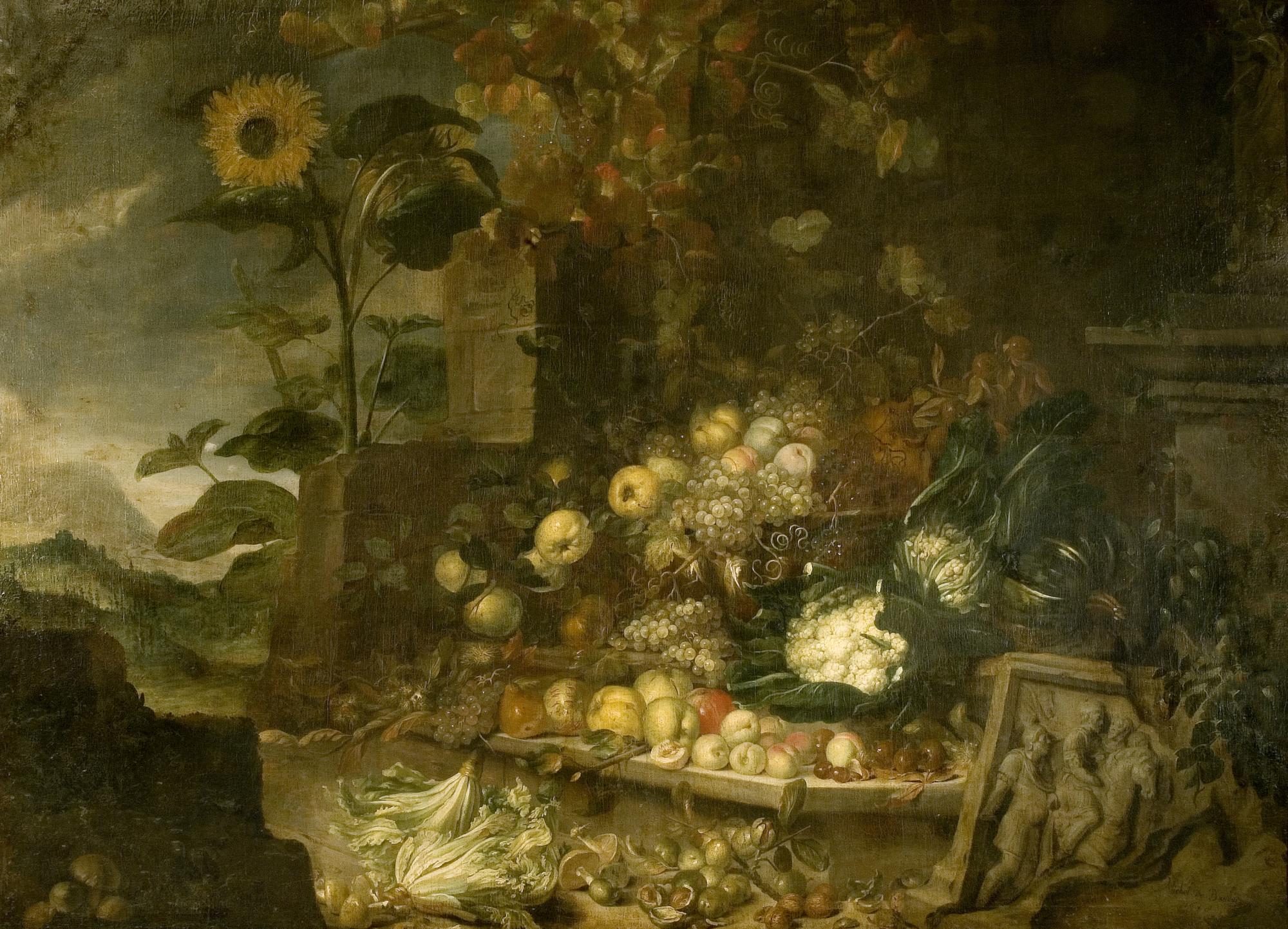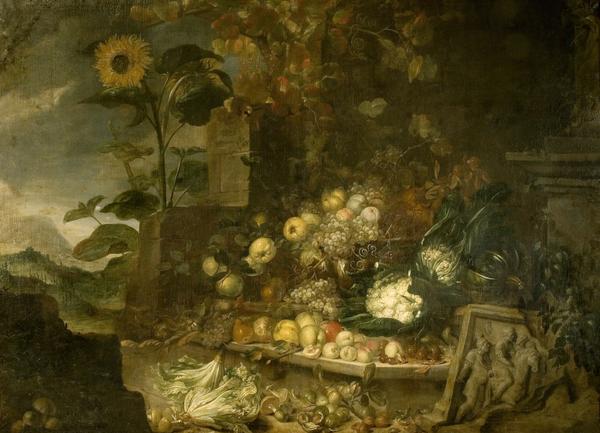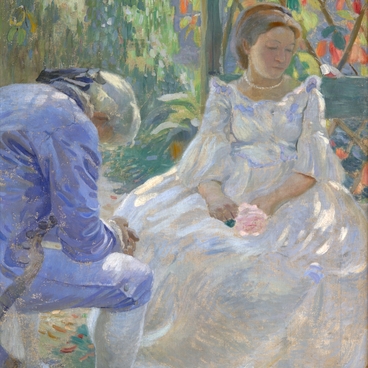French artist Michel de Bouillon painted the Still Life with Vegetables and Fruits in 1684. Upon admission to the Radishchev Museum, this painting was named Vegetable Shop.
The artist depicts various bounties of nature such as mushrooms, cabbages, peaches, plums, apples and walnuts. The objects are placed on massive stone stairs as if on the pedestal. Most likely, Bouillon depicts late summer or early autumn, the harvest time.
The painter chooses a natural background; in the distance he depicts a mountain landscape and gray sky shrouded in clouds. The staircase, on which the fruits are laid, is covered by a plant similar to ivy. Its foliage begins to turn yellow. Near it, Bouillon depicts a sunflower that raises its head to the sun.
Every vegetable and fruit has a sacred meaning. For instance, peach symbolizes original sin and salvation. According to one version, it was the peach that Adam and Eve had plucked from the Tree of Knowledge and ate it, defying the divine prohibition. Walnut has two halves, and therefore was considered a symbol of the dual nature of Christ: divine and human.
Into the canvas, Bouillon put the idea of the transience of life. Next to the short-lived fruits of nature, he depicts a fragment of a stone antique bas-relief. By this detail, the artist raises the theme of the ruthless work of time where one era is replaced by another. Therefore, still life was an allegorical way to remind about death. It is also called the allegory of mortality.
In the lower left corner of the picture, there is a date and the artist’s signature. This is very rare for paintings by Bouillon. Researchers know about ten paintings that belong to the artist’s brush for sure. In Russia, there are two of his works: a still life held by the Radishchev Museum, and the Vanitas canvas belonging to the collection of the Omsk Art Gallery.
Little is known about Bouillon’s life. The painter was born in early 17th century in the French town of Ayr. In 1638 he was accepted into the painters’ guild of the city of Tournay. Only the still life pictures by Bouillon have reached us. Most likely, he worked mainly in this genre.
The Still Life with Vegetables and Fruits was handed over to the Radishchev Museum in 1918, from the People’s Palace (now, The House of Officers). Before that, the canvas was owned by Sofia Belyaeva, a resident of Saratov.
The artist depicts various bounties of nature such as mushrooms, cabbages, peaches, plums, apples and walnuts. The objects are placed on massive stone stairs as if on the pedestal. Most likely, Bouillon depicts late summer or early autumn, the harvest time.
The painter chooses a natural background; in the distance he depicts a mountain landscape and gray sky shrouded in clouds. The staircase, on which the fruits are laid, is covered by a plant similar to ivy. Its foliage begins to turn yellow. Near it, Bouillon depicts a sunflower that raises its head to the sun.
Every vegetable and fruit has a sacred meaning. For instance, peach symbolizes original sin and salvation. According to one version, it was the peach that Adam and Eve had plucked from the Tree of Knowledge and ate it, defying the divine prohibition. Walnut has two halves, and therefore was considered a symbol of the dual nature of Christ: divine and human.
Into the canvas, Bouillon put the idea of the transience of life. Next to the short-lived fruits of nature, he depicts a fragment of a stone antique bas-relief. By this detail, the artist raises the theme of the ruthless work of time where one era is replaced by another. Therefore, still life was an allegorical way to remind about death. It is also called the allegory of mortality.
In the lower left corner of the picture, there is a date and the artist’s signature. This is very rare for paintings by Bouillon. Researchers know about ten paintings that belong to the artist’s brush for sure. In Russia, there are two of his works: a still life held by the Radishchev Museum, and the Vanitas canvas belonging to the collection of the Omsk Art Gallery.
Little is known about Bouillon’s life. The painter was born in early 17th century in the French town of Ayr. In 1638 he was accepted into the painters’ guild of the city of Tournay. Only the still life pictures by Bouillon have reached us. Most likely, he worked mainly in this genre.
The Still Life with Vegetables and Fruits was handed over to the Radishchev Museum in 1918, from the People’s Palace (now, The House of Officers). Before that, the canvas was owned by Sofia Belyaeva, a resident of Saratov.



